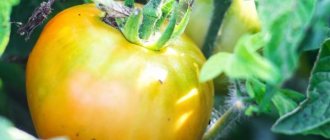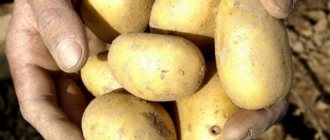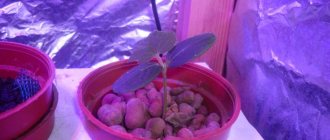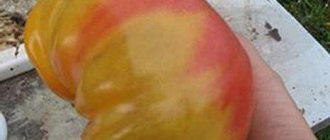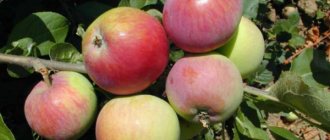Vegetable growing »Carrots
1
781
Article rating
Carrots are grown in all regions of Russia. It is important to choose a suitable hybrid for planting on the site, taking into account the climate. Suitable for growing in temperate climates will be Carotel carrots.
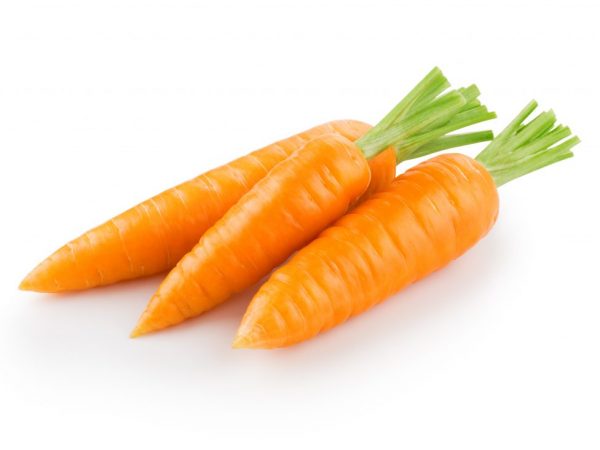
Description of carrots Karotel
Description and characteristics of the variety
Carotel carrots are very popular among summer residents and gardeners, and have been in the top ten varieties for more than a decade. Consider the reasons for its popularity, and learn about its advantages and disadvantages.
Did you know? Not only the root vegetables of carrots can be eaten, the ground part is also edible. It is used as an ingredient in soups, main courses, salads. Tea is also brewed from the tops.
Origin of the variety
This is one of the oldest varieties. Its selection began in the 70s of the last century, after the best vegetable growers and breeders in France were solving issues related to improving the quality of carrots.
Later, several varietal types were bred: Parisian carotel, Polar cranberry, Alenka, Carotel select. These types differ from the usual Karoteli variety in the shape, size and color of the fruit.
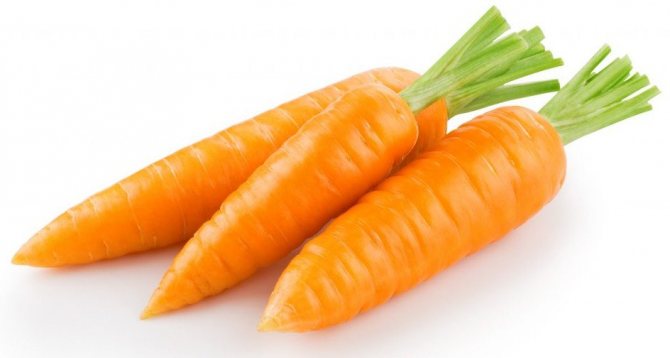

Landing regions
Karotel is preferred to cultivate in areas of the middle lane. However, the variety can be cultivated in all regions with normal climatic conditions for farming.
Ripening terms
Root crops ripen in a medium-speed period - 100–110 days after sowing. They are shaped like cones with a blunt end. They have a core. The skin is colored orange-red. The pulp is tasty, juicy. It contains a large amount of carotene - 10-13% and sugar - 6-8%. The average weight of one fruit is 60 g, length - 14-15 cm. Under improved conditions and care, there are roots of 20 cm in length and 120 g in weight.
Did you know? American farmer Christopher Qualley managed to grow the largest carrots in the world. She weighed 10.2 kg. The giant vegetable is recorded in the Guinness Book of Records.
Yield
If carrots grow in favorable conditions and are properly cared for, their yield will be 7–8 kg per 1 m².
Testimonials
Farmers who have tried to grow the Karotel variety speak positively about it.
Maria, Tula region: “I am 100% sure of this grade. I know that whatever the weather, I will still get a rich harvest. Moreover, all the roots are always smooth, beautiful and, of course, delicious. So sweet and juicy that even children love them. We eat them fresh and add them everywhere. We even make carrot juice from Karoteli ”.
Evgeny, Bryansk: “What I like about this variety is its constancy: not once in almost 10 years, during which I have been planting it, has there been such a thing that the carrots did not give birth. Vegetables are always tasty and juicy, so I definitely don't plan to experiment and plant something else. "
Olga, Moscow: “A very long time ago this variety was advised to me by a neighbor in the country. I bought a packet of seeds on her recommendation and did not even expect that from then on I would stop looking for something else. Karotel suits everything: it is both fruitful and tasty, and requires minimal maintenance. I didn’t find any shortcomings ”.
Pros and cons of the variety
- Among the advantages of the Karotel variety are:
- high productivity;
- excellent keeping quality;
- juiciness and beautiful appearance of the fruit;
- resistance to shooting, flowering, major diseases;
- preservation of a presentation after transportation;
- the possibility of cultivation before winter.
No flaws were found in the variety.


Landing features
These carrots are planted by sowing seeds in open ground. Since the variety is frost-resistant, planting can be done 2 times per year. The optimal planting dates are April and October. In spring it is necessary to wait until the air temperature reaches + 15… + 18 ° С.
Site selection and soil preparation
To cultivate carrots, it is necessary to choose a well-lit area that is under the sun's rays for a long period during the day. It must be prepared in the fall: remove plant residues and apply complex mineral fertilizers for digging, calculating the dosage in accordance with the instructions.
Important! Organic fertilizers (fresh manure, mullein) are not recommended. Carrots do not respond well to such feeding. In addition, the high nitrogen content in the soil impairs the palatability of the fruit.
If the autumn preparation was not carried out, in the spring, 14 days before sowing, you need to dig the soil 20-25 cm deep and add mineral fertilizers.
The best soil for growing carrots is one that has the following characteristics:
- looseness;
- fertility;
- with a slightly acidic or neutral pH reaction.
This vegetable crop is suitable for growing in sandy loam and loam.


Crop rotation rules
To get a high and high-quality crop, as well as to prevent the development of diseases and the reproduction of harmful insects, it is necessary to follow the rules of crop rotation. Carrots are well planted after plants of the cabbage family, potatoes, herbs, cucumbers, zucchini and siderates. You cannot place this vegetable crop in the beds where carrots, beans, parsley used to grow.
Important! Before planting carrots, it is advisable to grow other crops in the following sequence: in the first year - siderates, in the second - cucumbers or cabbage, in the third - siderates, in the fourth - onions.
Sowing technology
In addition to the soil, seed material also requires preparation before sowing. It must be hardened by placing it in the refrigerator for 10 days and then soaking in warm water for several hours. Sowing is carried out after complete drying.
Sowing technology is as follows:
- Make grooves in the garden bed.
- Spread the seeds in them at intervals of 2 cm, deepening into the soil by 0.5–1 cm. The recommended row spacing is 25–30 cm.
- Cover with foil or non-woven material.
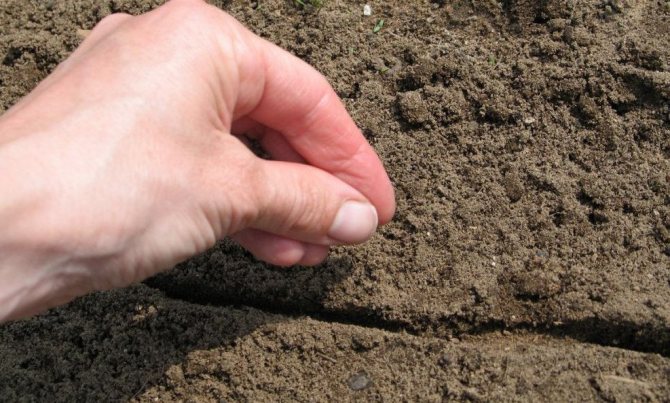

Carrot fly resistant
The carrot fly is the main, most vicious pest of the orange vegetable. The fly can destroy most of the crop by laying eggs twice during the growing season. Experienced gardeners advise planting the vegetable in early spring, when the larvae are not so active, but this is not suitable for northern regions and late varieties. Breeders are trying to invent hybrids that are resistant to this pest. The fly is attracted by the aroma of carrot tops, which contains chlorogenic acid. If you reduce the level of acid in the tops, then the fly may not detect the planting of the vegetable. The following hybrids are considered the most "courageous" for the carrot fly:
- Monanta;
- Flyway F1;
- Cardinal;
- Ibiza F1;
- Olympus;
- Nantic Resistaflay F1;
- Crunchy;
- Vitamin 6.
It is not necessary to plant only these hybrids; the fly can be effectively dealt with. Good ways are to follow the rules of crop rotation and cover crops with agrofibre.


Variety "Vitamin 6"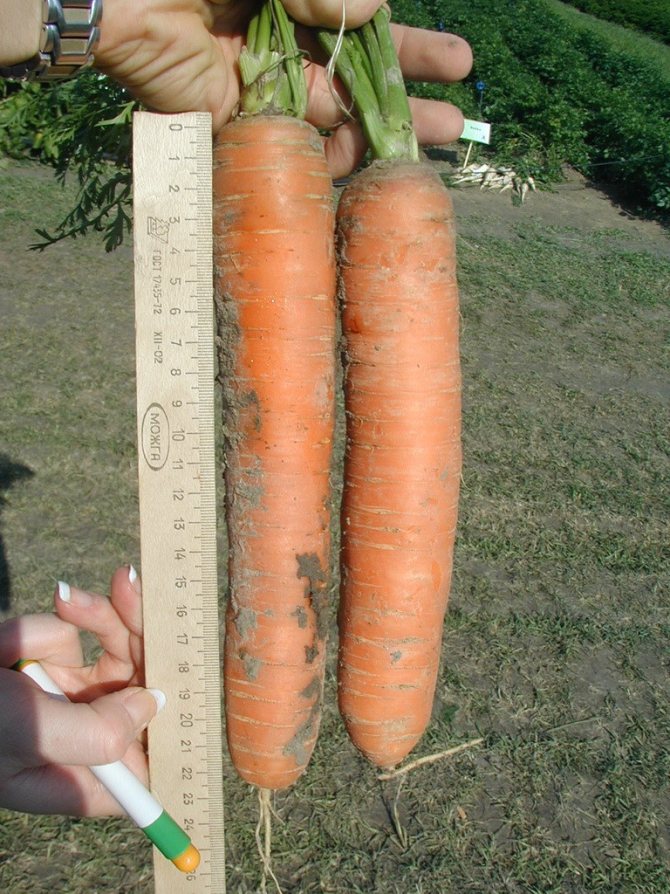

Variety "Monanta"
It is more useful to eat a vitamin vegetable fresh, and for this, plant delicious species.
Growing and caring for carrots
After the shoots have appeared, the shoots must be thinned out.The distance between each plant should be 2-3 cm.
In the future, you will need to regularly carry out such procedures as:
- moisturizing;
- top dressing;
- soil care;
- preventive treatment against infection with diseases and the spread of parasitic insects.
Watering
It is necessary to water the culture once every 7-10 days. You should focus on the condition of the soil and moisten it as soon as the top layer dries. How much water needs to be poured under one plant depends on its age. For almost mature roots, such a volume is needed so that it moistens 30 cm of soil in depth.
Important! It is necessary to water regularly, since too frequent watering, and then their long absence, or vice versa, lead to the formation of deformed fruits.
A day after watering, it is necessary to loosen. This procedure will avoid the formation of a hard crust on the surface of the earth and improve the moisture and air permeability of the soil.
Fertilization
Rich harvests are possible only with timely feeding.
For carrots, you will need to fertilize 2 times per season:
- 3-4 weeks after germination.
- 2 months after the first feeding.
The following types of fertilizers can be applied:
- nitrophosphate (1 tbsp. l. per 10 liters of water);
- wood ash (2 tbsp. per 10 liters of water);
- potassium nitrate (20 g) + urea (15 g) + double superphosphate (15 g) + water (10 L).
Top dressing should be carried out only after abundant watering.
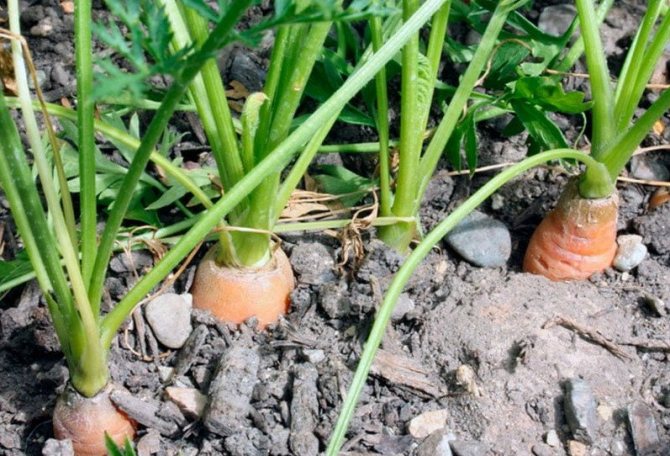

Pest and disease control
The most dangerous pest for carrots is carrot fly... To avoid being hit by it, the vegetable plant is periodically sprayed with infusions prepared from tomato tops or garlic. It is also important to remove weeds in a timely manner.
When a fly appears in the beds, you need to treat the planting with insecticides, for example, "Intavir", "Aktellik".
Carotel is resistant to major diseases. If required, it is necessary to process with a 1% solution of Bordeaux liquid. The same drug is used to treat Alternaria and Phomosis.
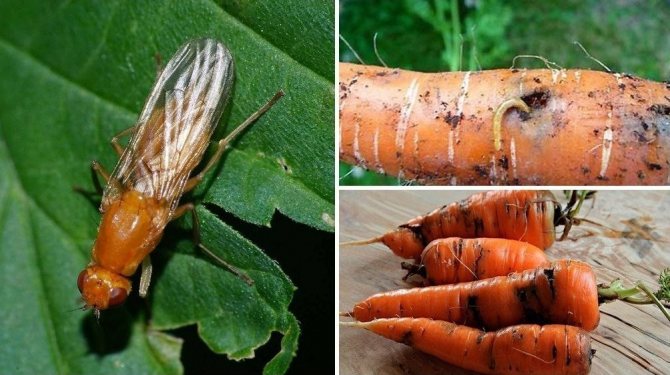

Harvesting and storage
Harvesting is calculated in accordance with the time recommended by breeders - approximately 3.5-4 months after planting. To find out the condition of root crops, 2-3 pieces should be removed from the soil. If the carrots have reached the desired length and have acquired a red-orange color, they can be harvested.
Also learn about carrot varieties such as Samson and Shantan.
Harvesting is planned for dry weather. Root crops can be dug with a pitchfork, a shovel, or pulled out by hand for the greens. After removing them from the soil, they are cleaned of the remnants of the earth and the greens are cut off. Then the fruits are dried from 2 to 12 hours. Fully dried fruits are sent for storage.
The vegetable is stored at a temperature from 0 ° C to + 2 ° C and an air humidity of 90–95%. Such conditions are observed in cellars, basements. To preserve vegetables longer, they are rolled in a clay mash and stored in boxes. If this is not possible, you can put the roots in boxes and sprinkle them with sand or a mixture of sand with slaked lime. It is also possible to store it in plastic bags with sawdust.
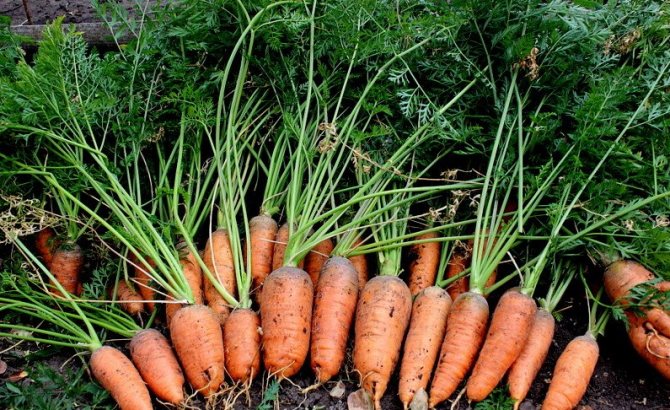

Carrot Carrot is a high-yielding table variety with many advantages, which is also easy to grow. The vegetable is used fresh and processed. The root vegetable is suitable for cooking, stewing, it is introduced into children's and dietary menus.
Best sweet
Carrots are so sweet that they are eaten as a dessert. The average level of sugars in root vegetables is about 4%, but there are species in which there are much more sugars. Delicious juices are obtained from such fruits, and it is a pleasure to just gnaw fresh.
| Name | Sugar content | Description of the variety |
| Baby sweet | 8,3% | Perhaps the sweetest carrot. Root crops with reddish-orange pulp, juicy, sweet.Stores well, but not particularly disease resistant. |
| The emperor | 7-9% | Bright fruits with a pointed tip, weighing 100 grams. With fragrant, dense pulp. A big plus - the taste of the fruit improves during storage. |
| Caramel | 7,5% | Smooth orange fruits with a blunt tip, weighing up to 170 grams. Resistant to flowers and does not crack. |
| Gourmet | 7,6% | Large, long fruits of rich, bright color. The pulp is juicy with a thin core. Requires observance of agricultural technology. |
There are varieties of carrots without a core that also have a very sweet taste, these are:
- Yaroslavna,
- Praline,
- Natalia F1.
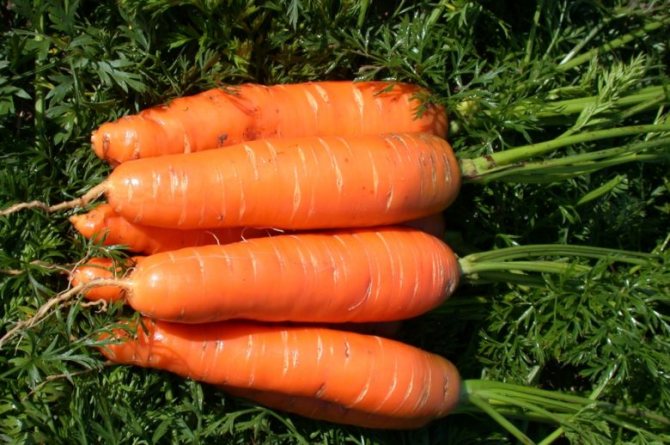

Carrot "Children's sweet"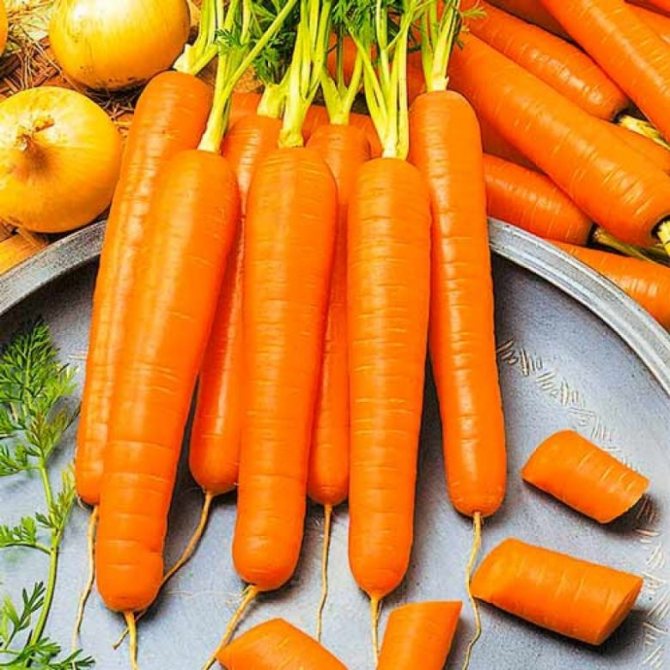

Variety "Natalia F1"
Even choosing the best outdoor carrot seeds may not yield a crop because it will be destroyed by pests. However, there are varieties that are even resistant to pests.

